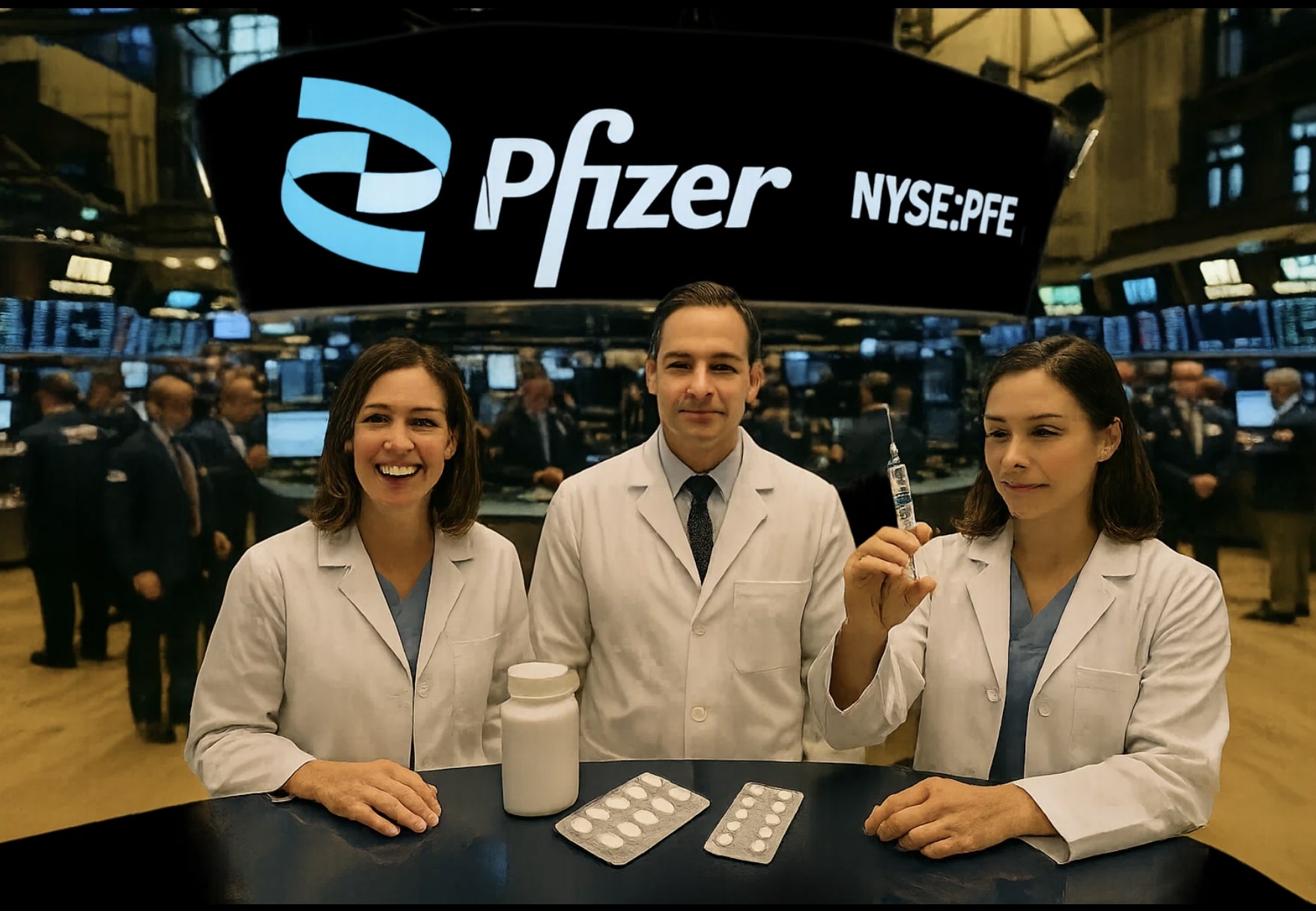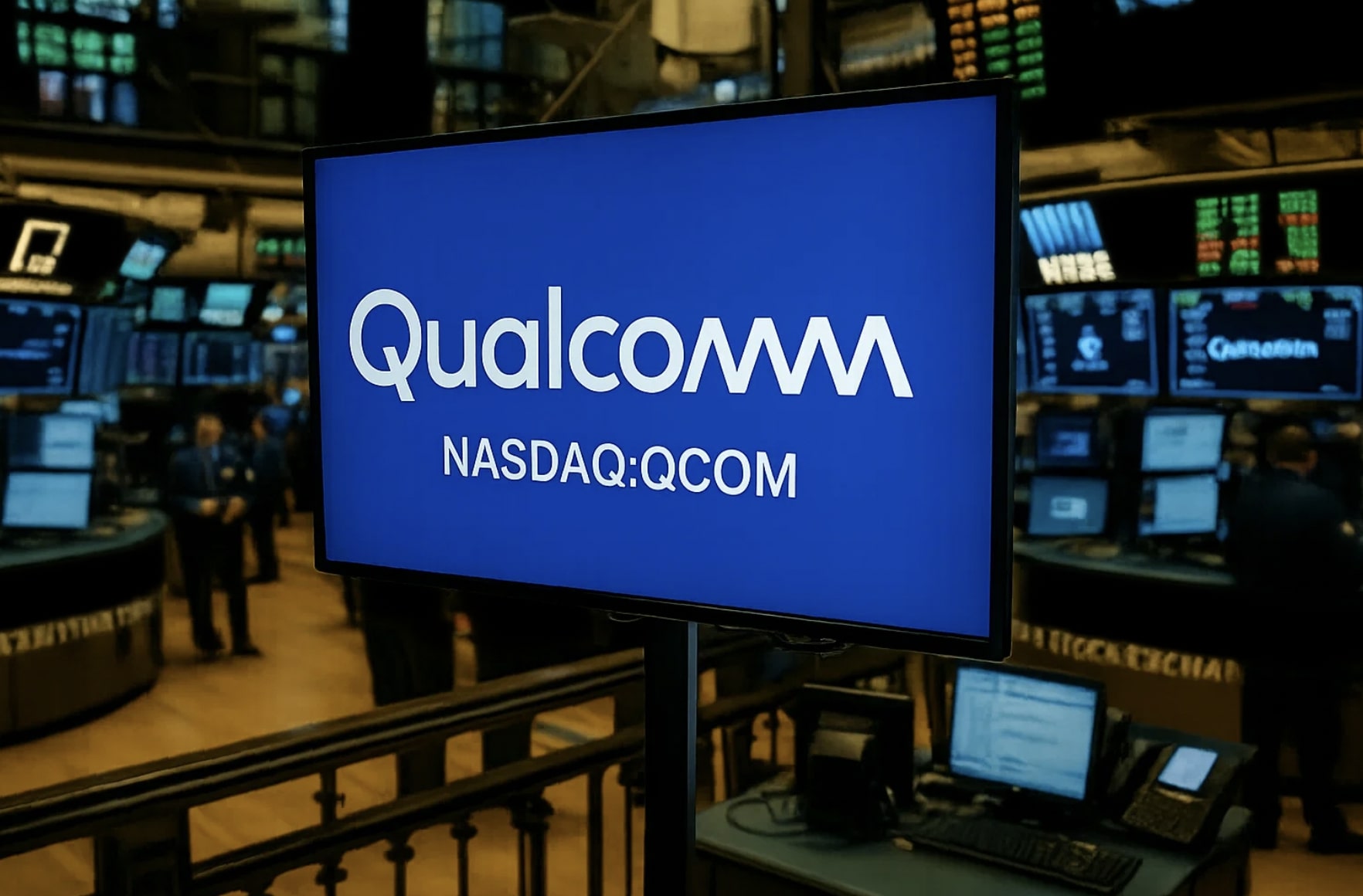
AT&T: A Deep Dive into Stock Performance and Financial Health
Unraveling the Dynamics Behind AT&T's Recent Market Trajectory and Its Outlook for the Future | That's TradingNEWS
AT&T Inc. Analysis: Digging Deep into the Numbers
(Trading on the NYSE under symbol: NYSE:T)
Stock Performance & Trading Highlights
- Current Stock Price: $15.23, experiencing an upswing of +1.13% ($0.17) as of the last close on September 15th, 4:02 PM EDT.
- After Hours Movement: A slight decrease to $15.20 (-0.20%).
- Historical Performance: AT&T’s stock ranged between $13.43 to $21.53 over the past 52 weeks. It has encountered a -9.13% change from the year's start, contrasting sharply with the S&P 500, which grew by 14.11% in the same period.
- Trading Volume Dynamics: The stock recorded a trading volume of 54,042,860, notably higher than its average volume of 44,674,185.
Link to Real-time Stock Chart: TradingNews - AT&T
Financial Overview
- Market Valuation: AT&T currently boasts a market capitalization of $108.88 billion.
- Performance Metrics: The company doesn't currently provide a PE Ratio (TTM). However, its EPS (TTM) stands at -1.18.
- Key Valuation Ratios:
- Price/Sales (TTM): 0.94
- Price/Book (MRQ): 1.07
- Enterprise Value/Revenue: 2.15
- Enterprise Value/EBITDA: 12.61
Share Statistics & Dividend Information
Shares Insights:
-
- Outstanding Shares: 7.15 billion
- Shares Held by Insiders: 0.09%
- Institutional Ownership: 56.72%
- Short Position: As of August 30, 2023, there are 115.11 million shares shorted, making up 1.61% of the outstanding shares.
-
Dividend Insights
- Forward Dividend & Yield: $1.11 (7.29%)
- Trailing Annual Dividend Rate: $1.11 with a Yield of 7.37%
- Five Year Average Dividend Yield: 7.10%
Financial Health & Profitability
-
Income Statement Overview: The company generated a revenue of $121.44 billion in the trailing twelve months. This revenue translates to $16.95 per share. Despite the considerable revenue, AT&T posted a net loss of $8.34 billion, resulting in a profit margin of -7.23%. However, its operating margin stands strong at 23.03%.
-
Balance Sheet Analysis: AT&T's total debt stands at a staggering $168.69 billion, with a debt/equity ratio of 142.91%. Their current ratio is at 0.68, indicating potential liquidity concerns.
-
Cash Flow Dynamics: The firm generated $36.98 billion from its operations and has a levered free cash flow of $13.32 billion.
Earnings Estimates & Performance
-
Current Quarter Estimates (Sep 2023): Analysts project an average estimate of $0.62 EPS, with estimates ranging from $0.6 to $0.67. This figure represents a decline from the previous year's $0.68 EPS.
-
Annual Estimates: For the current year, EPS is estimated to be around $2.41, while next year's projection is $2.47.
-
Revenue Projections: The consensus for the current quarter's revenue stands at $30.24 billion, a modest 1.30% increase year-over-year.
Major Stakeholders
-
Institutional Holders: Vanguard Group Inc. leads the pack with 620,297,447 shares, followed closely by Blackrock Inc. with 534,767,576 shares. Other notable stakeholders include State Street Corporation and Newport Trust Company, LLC.
-
Mutual Fund Stakeholders: The Vanguard Total Stock Market Index Fund is the top mutual fund holder with 223,288,238 shares. Other significant fund stakeholders include the Vanguard 500 Index Fund and the SPDR S&P 500 ETF Trust.
Investor Sentiments and Future Prospects
The downturn observed in NYSE:T during 2023 was significant, with a reduction of 20% in stock value, causing ripples of concern among its shareholders and the broader financial community. While Stankey was notably dismayed at this undervaluation, he radiated a distinct confidence in the company's redirection strategy, and its prospective positive impact on the future.
Stankey’s Vision for AT&T
Under the leadership of Stankey, AT&T has made concerted efforts to pivot and redefine its market position. He sees a great potential in the upcoming endeavors and believes in the strength of the brand's identity. His faith is grounded on robust strategic moves which aim to transform the telecom giant into a more agile and adaptable entity, poised to conquer the challenges of a fast-evolving technological landscape.
Breaking Down the Repositioning Strategy
Central to Stankey’s strategy is an ambition to streamline the company’s assets, focusing predominantly on the core areas which show the most promise and potential for consistent growth. Among the key initiatives is the divestiture of non-core assets. Such decisions are not taken lightly; they reflect an acute business acumen, discerning where the company's strength truly lies and where the future value will be most prominent.
Stankey also underscores the importance of investing heavily in broadband infrastructure. Broadband has rapidly become a backbone for myriad digital experiences in the contemporary world, and AT&T, by bolstering its broadband offerings, intends to capitalize on this growing demand. These investments will likely play a pivotal role in ensuring the company maintains its competitive edge, catering to both current subscribers and enticing new ones.
Furthermore, the expansion plans for AT&T's 5G network are on the horizon. As 5G technology becomes the standard for connectivity, AT&T's commitment to widespread 5G deployment can be seen as a strategic move to not only retain but expand its user base. It's a forward-looking approach, aligning the company's offerings with future technological demands.
Stock Outlook and Trading News Linkage
For those keen on following the real-time trajectory of AT&T's stock, the chart can be accessed through this link. It provides a comprehensive view of stock movements, enabling investors and market enthusiasts to keep an eye on any shifts, major or subtle, and to make informed decisions based on live data.
Balancing Debt and Investments
Addressing the financial structure of the company, it's evident that AT&T's leadership is well aware of the balancing act required between debt and investment. Debt management is pivotal for any conglomerate of AT&T's stature. While the company has sizable debts, strategies are in place to manage this, ensuring that the company's financial health remains robust. On the flip side, careful investments, such as the ones in broadband and 5G as mentioned earlier, are expected to bring in substantial returns, paving the way for future stability and growth.
Global Market Response and Competition
AT&T's performance does not exist in a vacuum. Its position on the global stage is influenced by myriad factors, competitors being primary among them. As the telecom and technology sectors remain highly competitive, the decisions AT&T makes today will determine its standing amid global giants. While challenges are aplenty, the company's strategic moves aim to fortify its place, ensuring it remains a formidable force in the global market.
AT&T's Financial Health and Dividend Sustainability: A Deep Dive
NYSE:T Stock Performance and Market Concerns
AT&T's stock has been under considerable pressure, with its shares plunging over 25% from their 52-week high. This downtrend has been predominantly fueled by apprehensions about its capacity to generate a sustainable free cash flow. Given the resultant decline in share price, the dividend has surged to a yield of over 7%. Such a lofty dividend yield, combined with concerns over cash flow, have raised eyebrows about the company's ability to sustain its dividend payments.
However, these anxieties were recently assuaged when AT&T's CFO, Pascal Desroches, declared that the company is set to meet its free cash flow forecast for the current year, indicating that dividend cuts are unlikely in the near future.
The Numbers Behind AT&T's Confidence
Desroches recently emphasized AT&T's robust financial position, expecting to generate free cash flow between $4.5 billion and $5 billion in the third quarter alone. This projection underscores the CFO's confidence in achieving or even surpassing the annual target of $16 billion in free cash flow.
A deeper dive into the balance sheet highlights that, despite generating over $15.2 billion in free cash flow over the past year, net debt remains unchanged. However, a more promising picture is painted for the latter half of 2023. The telecom behemoth is optimistic about accumulating $11 billion in cash in this period. After settling dividends and other liabilities, AT&T envisions a surplus of over $4 billion, driving its leverage ratio closer to 3.0 by the end of the year. Further, projections indicate a reduction in leverage to 2.5 by 2025, facilitated by the continued influx of free cash aimed at debt repayment.
AT&T Vs. Verizon: A Competitive Landscape
A comparative analysis with Verizon offers intriguing insights. AT&T’s current leverage ratio is relatively high, especially when contrasted with Verizon’s, which stood at 2.6 at the end of Q2 (a notable improvement from 2.7 the previous year). Verizon’s long-term aspiration is to bring the leverage down to a range of 1.75 to 2.0. Additionally, Verizon has demonstrated its financial prowess by enhancing its dividend by 1.9% recently, marking the 17th consecutive year of dividend growth.
However, AT&T isn't entirely shadowed by its rival. AT&T's substantial dividend yield is its primary allure. As the company consistently improves its free cash flow and leverage ratio, the sustainability of this dividend becomes more certain. Yet, when pitted against Verizon's offerings—a slightly higher dividend yield of 7.8% as opposed to AT&T’s 7.4%—Verizon emerges as a more appealing proposition for investors keen on steady income.
AT&T's Revitalization and Future Outlook
Despite facing skepticism, AT&T has seen a series of upgrades, including from financial giants like Citi, which now holds a more optimistic view on the stock after noting signs of stabilization and the emphasis on free cash flow. Furthermore, Citi highlights that the forthcoming free cash flow will significantly aid in debt reduction and uphold dividend distributions.
Underscoring this belief is AT&T's CFO Desroches, who fervently reiterated their strong performance trajectory. AT&T’s strategy for the year is unfolding precisely as anticipated, with each quarter's performance surpassing the previous one in terms of cash flow.
Moreover, the company’s determined drive to enhance its balance sheet is evident. Over the recent past, AT&T has managed to reduce its debt by over $20 billion. As of the start of Q2, net debt stood at $134.2 billion, which was successfully brought down to $132.0 billion by the quarter's end.
New Promotions and Market Positioning
AT&T is gearing up to make a splash in the market with lucrative deals on the new iPhone, aiming to expand its customer base in a market witnessing slower growth. Interestingly, despite this aggressive promotional strategy, the company's free cash flow and dividends are not expected to be adversely impacted.
At a recent conference hosted by Bank of America, Desroches reiterated AT&T’s optimistic free cash flow forecast for the third quarter. This affirmation echoes the company's robust financial goals set at the beginning of the year.
However, it's vital to acknowledge the substantial investments AT&T has made, pouring $24 billion each in the last two years, to enhance its 5G and fiber networks. Such massive capital expenditure cycles naturally raise concerns about potential impacts on free cash flow. Additionally, promotional campaigns, like offering up to $1,000 in credit for iPhone trade-ins, could impact profit margins and cash reserves.
NYSE:T Analysis Conclusion
Stock Performance Synopsis:
NYSE:T's recent stock performance shows mixed signals. The stock price is currently at $15.23, having gained 1.13% as of the last close on September 15th. However, a broader view indicates a -9.13% change from the start of the year, underperforming the S&P 500 which grew by 14.11% in the same period. The stock's trading volume is notably higher than its average, possibly indicating increased market interest or speculation around AT&T.
Financial Health:
AT&T is a financial behemoth with a market capitalization of $108.88 billion. While the company reported significant revenue of $121.44 billion in the past year, it posted a net loss of $8.34 billion. This suggests inefficiencies or significant costs undermining the firm's profitability. However, the operating margin of 23.03% indicates a robust underlying operational efficiency.
One of the most significant concerns is AT&T's debt, standing at a substantial $168.69 billion. The debt/equity ratio of 142.91% suggests a heavy reliance on borrowing, and the current ratio of 0.68 might indicate potential liquidity challenges ahead.
Dividends and Shareholder Returns:
AT&T's dividend yields are notably high, averaging around 7% in recent years. For income-focused investors, this is certainly appealing. Yet, with the stock price declining and the high debt, the sustainability of these dividends comes into question. CFO Desroches' recent comments provide some reassurance on this front, emphasizing the company's commitment to its dividend and its optimistic cash flow projections.
Strategic Repositioning:
Under Stankey's leadership, AT&T seems determined to redefine its market position. Divestitures of non-core assets and significant investments in broadband infrastructure and 5G deployment highlight the company's efforts to remain relevant and competitive in a rapidly evolving market. The emphasis on broadband and 5G, both integral to the future of digital communication, signals a forward-looking strategy.
Competition and Comparison:
When juxtaposed with Verizon, AT&T's financial position appears more leveraged. Yet, AT&T's dividend yield remains a significant attraction for investors. However, the sustainability of this dividend, given the company's financial health, remains a point of contention.
Future Outlook:
Despite challenges, there are indicators of a potential turnaround. Significant upgrades, including from financial institutions like Citi, hint at renewed optimism. The company's determination to reduce debt, paired with aggressive marketing strategies like iPhone deals, could bolster its market positioning. However, the scale of their investments in 5G and fiber networks, along with aggressive promotions, might put pressure on their profit margins and cash reserves in the short term.
Final Verdict:
Given the comprehensive analysis, NYSE:T appears to be in a transitional phase. While there are evident financial challenges, especially concerning its debt and recent stock performance, the strategic redirection towards core competencies like 5G and broadband show promise. The company's commitment to dividends is commendable, but potential investors should be cautious, weighing the short-term challenges against the long-term strategic vision. As of now, AT&T seems to be a 'Hold' - there's potential for growth and recovery, but inherent risks need close monitoring. Investors interested in real-time stock trajectory can follow the link here.
















